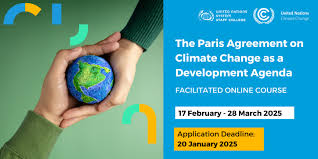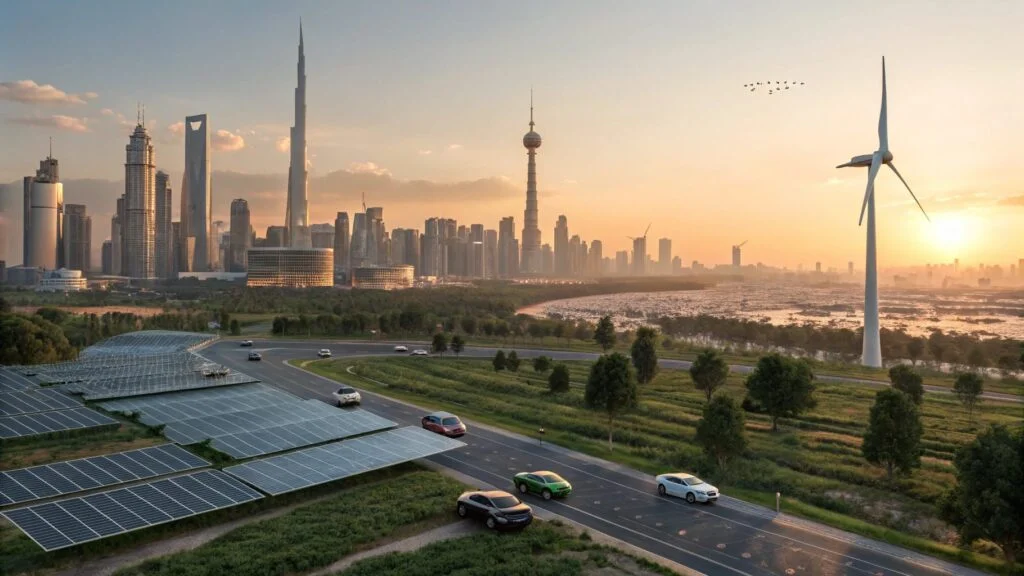Now Reading: 2025 Paris Climate Goals: Winners, Losers, and Surprises Revealed!
-
01
2025 Paris Climate Goals: Winners, Losers, and Surprises Revealed!
2025 Paris Climate Goals: Winners, Losers, and Surprises Revealed!

Table of Contents
In 2015, nearly 200 countries came together in a historic moment to fight climate change. They signed the Paris Agreement, pledging to limit global warming to well below 2°C, ideally to 1.5°C, above pre-industrial levels. Now, in 2025—ten years later—it’s time to ask: how much progress have we made?
According to the latest reports from the United Nations Framework Convention on Climate Change (UNFCCC) and independent research institutions, the world has made some progress, but we are not yet on track to meet the goals of the Paris Agreement.
What Was Promised in the Paris Agreement?

The Paris Agreement set flexible, country-led targets known as Nationally Determined Contributions (NDCs). These are plans each country submits every five years, outlining how they will reduce greenhouse gas emissions and adapt to climate change.
The core goals include:
- Holding global temperature rise below 2°C and aiming for 1.5°C
- Reaching net-zero emissions around mid-century
- Supporting developing countries with climate finance, technology, and capacity building
2025 Status Report: Key Findings
A major review published in June 2025 by the UN Environment Programme (UNEP) and the Climate Action Tracker reveals a mixed picture.
1. Emissions Still Rising in Key Regions
- Global emissions have decreased slightly, but not fast enough.
- The world is currently on a trajectory to warm by 2.5°C to 2.9°C by 2100 if current policies continue.
- China, the United States, and India remain the top three emitters, but the U.S. has reduced emissions by 17% since 2015 due to clean energy policies.
2. Only a Few Countries Are on Track
According to Climate Action Tracker:
- Only three countries—Morocco, Gambia, and Bhutan—are currently meeting or exceeding their NDCs.
- European Union countries have made strong progress, especially Germany and France, thanks to aggressive decarbonization.
- Many countries, including Australia, Brazil, and Russia, are falling behind.
3. Renewable Energy is Booming
- Solar and wind power now account for over 30% of global electricity production.
- Green technology investments reached a record $1.3 trillion in 2024.
- However, fossil fuels still make up over 60% of the global energy mix.
Climate Finance: The $100 Billion Pledge
One of the Paris Agreement’s cornerstones was the promise by rich countries to provide $100 billion annually to poorer nations by 2020 to help with climate mitigation and adaptation. That target was missed for several years.
In 2025:
- $98 billion was mobilized in 2024, and $105 billion is expected in 2025.
- However, critics argue that much of this is loans, not grants, and not evenly distributed.
Heatwaves, Floods, and Extreme Weather: A Wake-Up Call
The past few years have been marked by record-breaking heatwaves in Europe, massive wildfires in Canada and Australia, and devastating floods in Asia and Africa. These climate disasters are now more frequent and intense, causing:
- Billions in damages
- Millions displaced
- Increased pressure on governments to act quickly
Scientists warn that we’re already seeing the effects of 1.2°C of warming, and the risks increase sharply beyond 1.5°C.
Technological Hope: Breakthroughs and Innovations
Despite setbacks, there is hope:
- Carbon capture technologies are now being tested at scale in Canada, the U.S., and Norway.
- Electric vehicle (EV) sales have doubled since 2022, now making up 40% of all new cars sold globally.
- Green hydrogen is gaining traction as a clean energy source for industries like shipping and steel.
Youth and Civil Society Are Leading the Charge
Movements like Fridays for Future and global climate marches continue to grow. In 2025:
- Over 10 million people joined climate protests in more than 100 countries.
- Courts in Netherlands, Germany, and Colombia have ordered governments to step up their climate actions.
The youth climate movement remains a powerful force, keeping pressure on politicians and businesses.
What Happens Next: The Road to COP30 in Brazil

The next big climate summit, COP30, will be held in Belem, Brazil in November 2025. This will be a critical moment for countries to:
- Update and strengthen their NDCs
- Agree on global carbon markets
- Finalize rules for loss and damage funding for vulnerable countries
Observers say the outcome of COP30 could determine whether the world keeps the 1.5°C dream alive—or lets it slip away for good.
Conclusion: A Critical Crossroads
In 2025, the world stands at a climate crossroads. While progress has been made, it is far from enough. The science is clear: every fraction of a degree matters, and every year counts.
The Paris Agreement was never just about promises—it’s about action. The next five years will determine whether we rise to the challenge—or face the irreversible consequences of inaction.
Read More:- Deyaar’s Latest Announcement Shakes Up the UAE Property Market





















